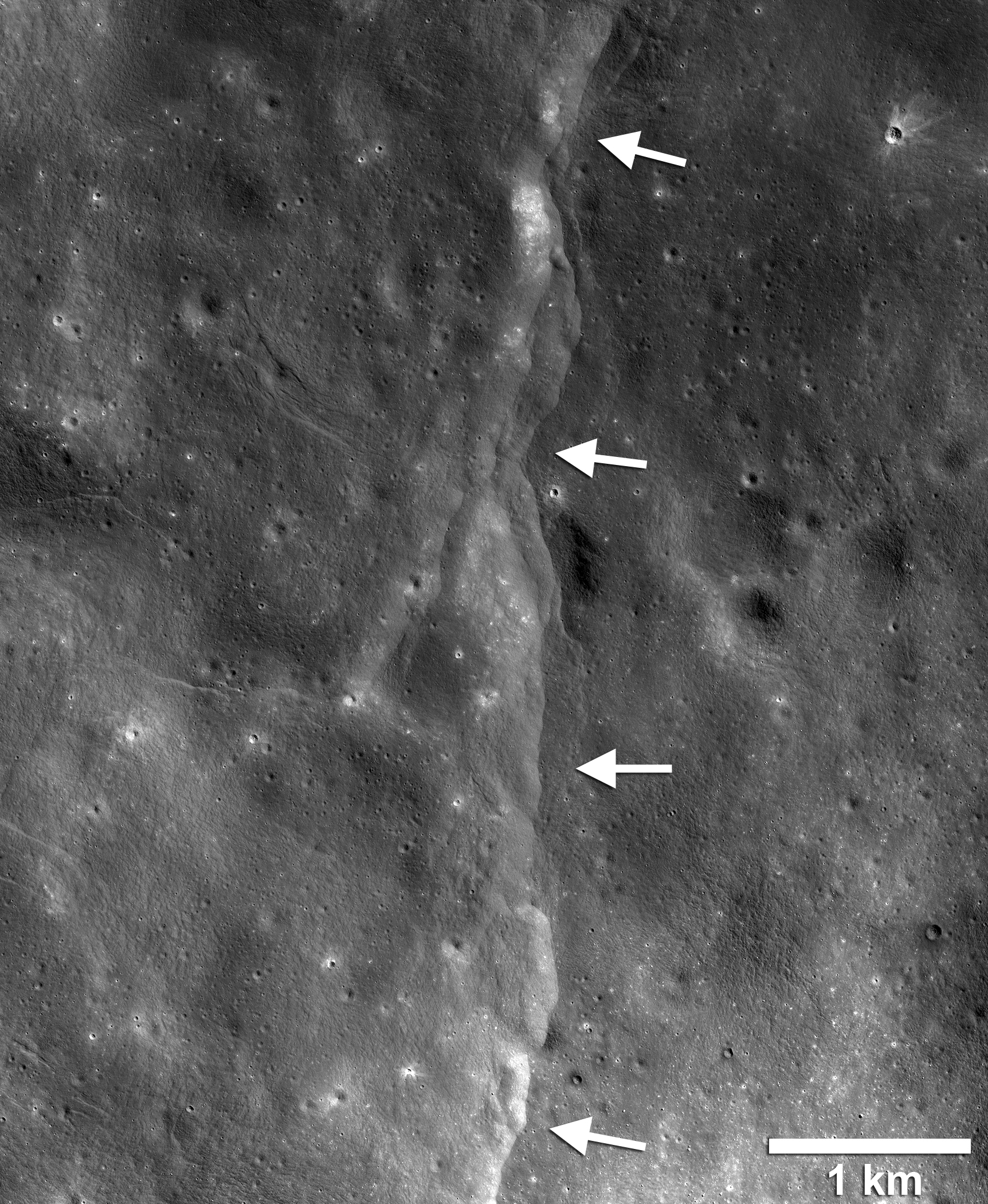Earth’s influence on the moon

Though scientists have known since 2010 that the moon is shrinking over time, and forming surface ridges as it does, new research conducted by Wheaton Professor of Geology Geoffrey Collins and six others suggests that these ridges are actually affected by Earth’s gravitational pull.
Using images produced by NASA’s Lunar Reconnaissance Orbiter, Collins and his colleagues have evaluated more than 3,000 ridges, known as “lobate scarps,” on the moon’s surface. Though these scarps form naturally when the molten core of the moon cools and contracts, their placement would be random without the influence of outside forces. But extensive study of the scarps reveals a distinct pattern that fits with Earth’s tidal force on the moon—a discovery outlined in the paper “Global thrust faulting on the Moon and the influence of tidal stresses,” published in the October 2015 issue of Geology.
These findings were highlighted recently in an article published by The Washington Post and in a press release on the NASA website.
Collins, a planetary scientist who has been involved with several NASA projects, has investigated geological features on the planets and moons of Jupiter, Saturn, Venus and Pluto as well as his recent study of the Earth’s moon.
“My role in this project was to run some of the tidal stress models and compare them to the observed patterns on the moon,” Collins said.
Tom Watters, Smithsonian senior scientist in the National Air and Space Museum’s Center for Earth and Planetary Studies, was lead author on the paper. Co-authors included Collins; Maria Banks, Katie Daud and Michelle Selvans, Center for Earth and Planetary Studies at the National Air and Space Museum; and Mark Robinson and Nathan Williams, School of Earth and Space Exploration at Arizona State University.
